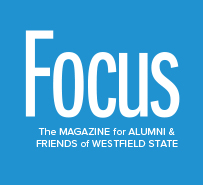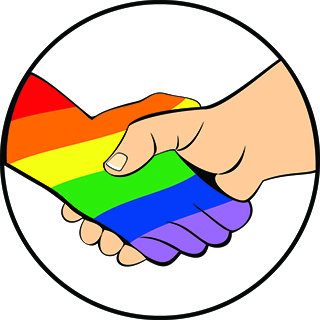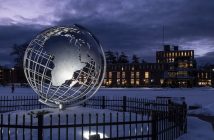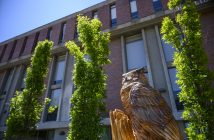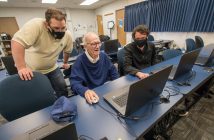In the spring of 1993, during the campus “Celebrate Unity” gathering, undergraduate Christopher Tarvit ’94 took to the stage and publicly came out to the campus as a gay man.
It was an act of enormous courage, given the social climate of the times.
Since then, Westfield State has become recognized as a campus that embraces diversity and supports its lesbian, gay, bisexual, transgender, queer and questioning (LGBTQQ) students.
As with many social movements, one person’s courage empowers others to join the cause. Following Tarvit’s declaration, newly hired counseling center staff member Brian Cahillane remembers thinking, “This is the perfect opportunity to start a club.”
Cahillane, along with Tarvit and Katheryn Bradford, who then worked in Residential Life, started organizing.
Bradford recalls the early days of the Gay/Straight Alliance, as it was called then, as “undercover and underground,” as many students did not feel safe identifying themselves as queer. To ensure members’ safety, new students had to call Cahillane or Bradford; they would explain the group’s mission and reveal the meeting location for those interested in attending.
The first event, a holiday dance, was literally underground—in the basement of Scanlon Hall. Campus security was posted at each end of the building to ensure safety. The widely advertised dance brought LGBTQQ students from as far as Maine.
But the real turning point of empowerment for the students was in 2000, when they attended the Millennium March for LGBTQQ rights in Washington, D.C. Bradford recalls, “The moment we came off the subway and saw all the thousands of LGBT people, we knew we made the right choice. I still get goose bumps.”
The students marched in the parade with a Westfield State College banner with pride and honor. Lisa Edwards ’01 says the Millennium March “changed my life.”
The club continued through the years, with participation ebbing and flowing. Then, in 2009, Keegan Gonsalves ’11, M.Ed. ’13, a member since her freshman year, became president. She brought an energy and determination that invigorated and grew the club.
“The group had become small, so I wanted to focus on increasing our numbers,” says Gonsalves. Using strategies from signage on the jumbo campus video screens, bake sales, movie nights and other marketing strategies, the club increased from about eight to 25 students by the following semester. Along the way, the name was changed to the Queer/Straight Alliance, so that “we could take back the word,” as Gonsalves says.
The Queer/Straight Alliance is imaginative and active at keeping the queer community visible and socially conscious. Members celebrated Transgender Day Remembrance, for instance, by displaying silhouettes on campus with the names of the over 100 transgendered people killed worldwide in one year. “It was our way of bringing attention to the humanity of each individual,” she says.
Other recent initiatives have included a Pride Prom for queer students who didn’t attend their high school proms, celebrations in October for National Coming Out Day, social justice theatre productions, scholarships and tours of the campus tailored to the LGBTQQ community.
Gonsalves says, “Overall, my sense is there is a good relationship between straight and gay students. Adverse reactions are in the minority. I was just lucky to be born in a generation where acceptance has grown.”
